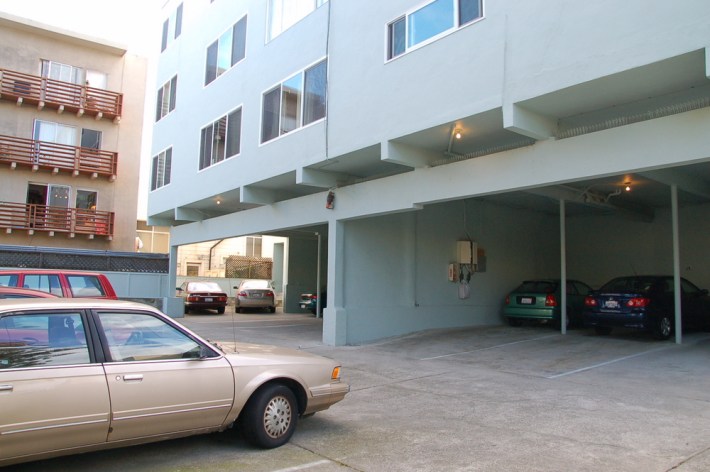How Car Parking Can Make Earthquakes More Dangerous in San Francisco
10:30 AM PDT on March 27, 2013
The threat of earthquakes that could destroy the homes of thousands at any moment has always loomed over San Francisco. In a bid to to reduce that risk, the Board of Supervisors is expected next week to mandate seismic retrofits for nearly 3,000 wood-frame "soft-story" buildings with five housing units or more that are potentially in danger of collapse.
But what may be overlooked in the discussion about earthquake safety is how it ties in with city parking policy: Many of the apartment buildings with weak ground-floor structures, or "soft-story" buildings, were built that way to make room for car parking.
"These are buildings that have larger openings on the ground floor, either due to garages or storefronts," said Patrick Otellini, San Francisco's director of earthquake safety. Many soft-story buildings were constructed before 1978, when modern engineering standards were set, he said.
Tom Radulovich, executive director of Livable City, explained that San Francisco set minimum residential parking requirements for new buildings in 1960, but those policies didn't account for parking's impacts on structural integrity. "If you've created a soft-story with parking additions, still in most places in the city there isn't a way to get out of that, even if it compromises the safety of your building," he said.
Radulovich said many buildings in American cities during the 1960s and 70s were built with ground floors completely devoted to parking, leaving little structural support, though they're less common in SF, than, say, Los Angeles. For these buildings, he used the nickname "dingbat."
Livable City has been working to reform provisions in the planning code in recent years to allow building owners more flexibility in removing or re-configuring parking to improve a building's structural integrity, Radulovich said. As of 2010, developers can apply for an exemption from parking requirements if they can't be met without compromising seismic safety. And tandem parking garages, in which multiple car owners park front-to-end in such a way that they rely on one another to move their cars for access, were legalized a few years ago at Livable City's behest. That provision allows a garage to include the required number of parking spaces while taking up less space from the ground floor.
Otellini noted that most San Franciscans may underestimate how much damage a major earthquake could do, since they may only have only experienced quakes as big as Loma Prieta in 1989, which was only "moderate" in scale. That earthquake damaged the Embarcadero and Central Freeways badly enough to require their removal, and it sunk many houses in the Marina District, which sits on landfill. "This is not a Marina District problem. This is not a Mission District problem. This is a San Francisco problem," he said.
"These types of buildings pose a serious threat, because there's 58,000 San Franciscans that live in these buildings," said Otellini. "If these buildings collapse, because it's largely a rental [population], these are people that won't come back to San Francisco."
For a list of the nearly 3,000 soft-story buildings potentially at risk, read more at the SF Public Press.
Stay in touch
Sign up for our free newsletter
More from Streetsblog San Francisco
SFMTA Starts West Portal Outreach
Agency presents plans to block traffic from crossing in front of the train station





